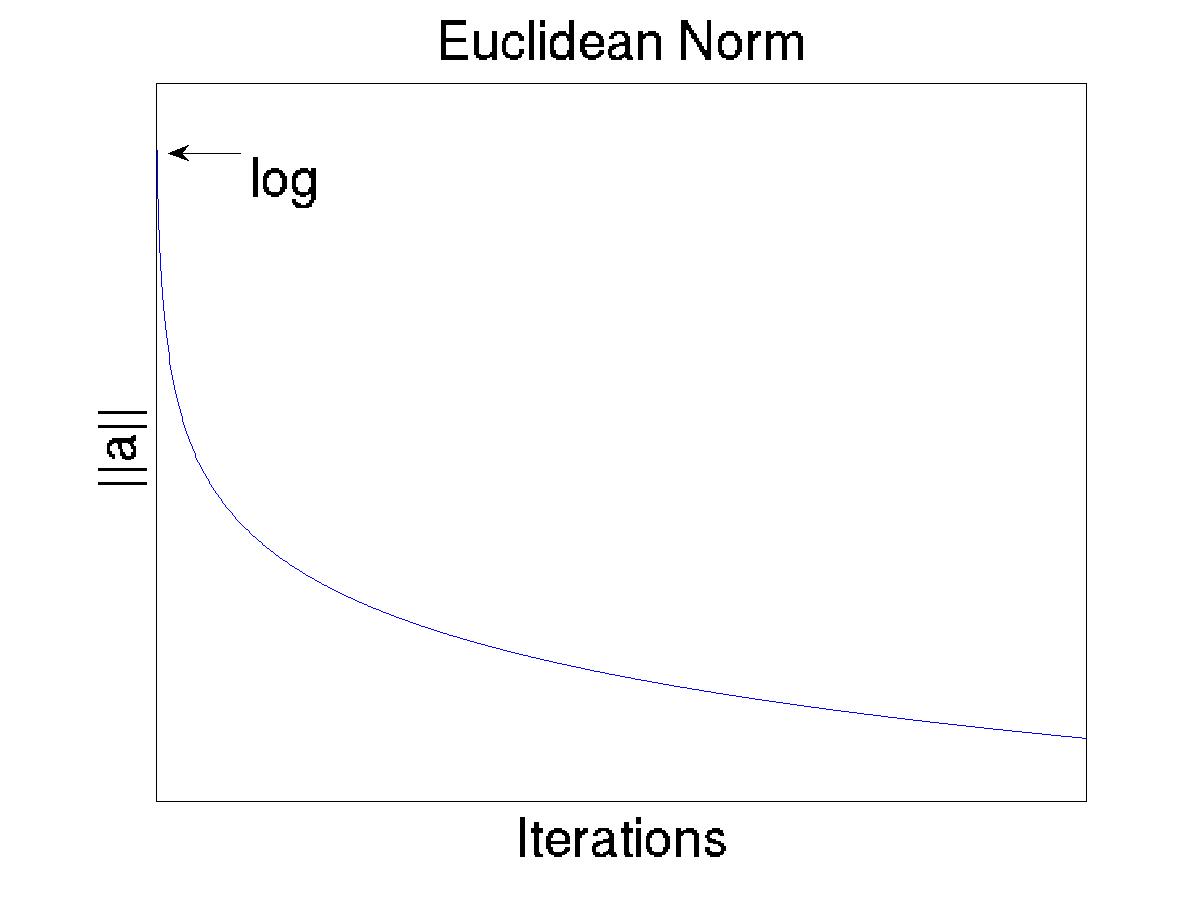 |
||||||||
 |
 |
 |
 |
|||||
 |
||||||||
 |
||||||||
 |
 |
|||||||
 |
||||||||
 |
||||||||
 |
||||||||
 |
||||||||
 |
||||||||
ERRORS AND NORMS
In an iterative simulation, the result should be approaching the final or exact value. Computing the norm at each iteration, should result in behavior similar to Fig. 1↓.
In computations with matrices, one can compute the condition of the matrix. Condition(A) = ||A||*||A − 1|| yields a measure of how reliable is the prediction error:
(||b||)/(||A||*||x||)*(||r||)/(||b||) ≤ (||e||)/(||x||)
≤
(||A − 1||*||b||)/(||x||)*(||r||)/(||b||)
(||b − Ax̂||)/(||b||)
=
(||x − x̂||)/(||x||)
In this computation, A − 1 is needed, which can be a problem. A − 1 can be estimated. If A is triangular, then the condition of (A) ≥ (||A||∞)/(min|aii|). Otherwise,
(||x − x̂||)/(||x̂||) ≤ cond(A)(||E||)/(||A||)
where A = Â + E. If the cond(A) is large, then a small change in the matrix values will result in a large change. Therefore, the error will be large, as illustrated by
(1)/(cond(A))
=
min⎧⎩(||A − B||)/(||A||)where B is not invertible⎫⎭
Bx
=
0
x⃗
≠
0
A matrix is considered to be ill-conditioned if cond(A) is ’large’. In an engineering sense, this means that (1)/(u), where u is the roundoff error. Without knowing how conditioned a matrix is, one can get iterative improvement in the answer:
Ax = b
x̂1 is solution, e = x − x̂1
r = b − Ax̂1
x̂2 = x̂1 + ê1 where Ae=r and ê is solution
...continue until...
(||êk||)/(x̂k) ≈ 10 − s
where s ≡ number of decimal places.
← Previous Page
← Previous Page
